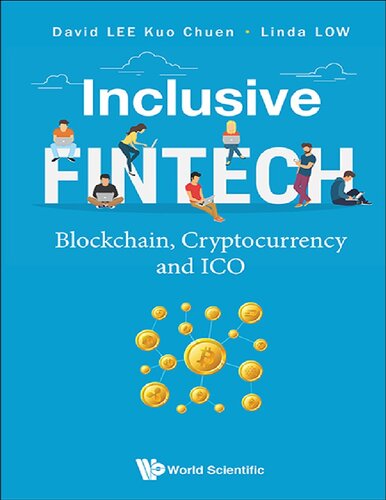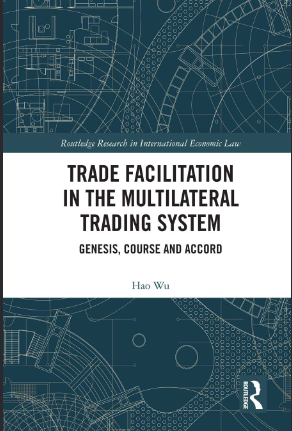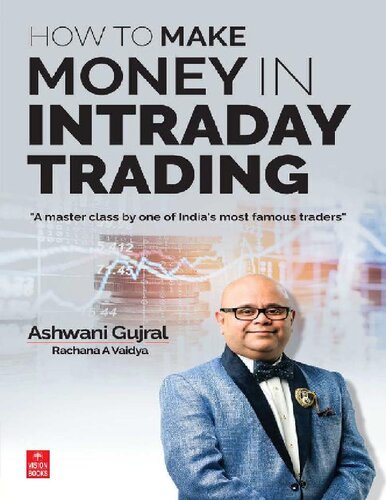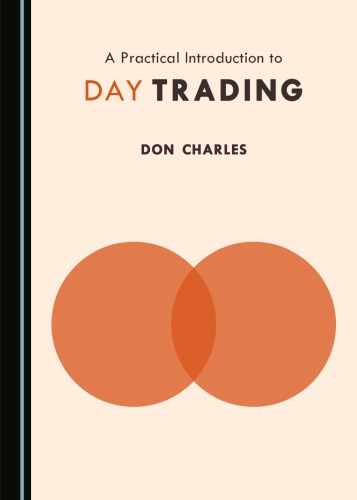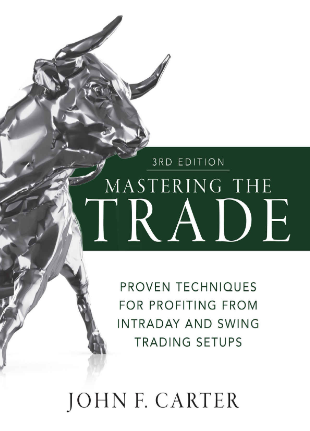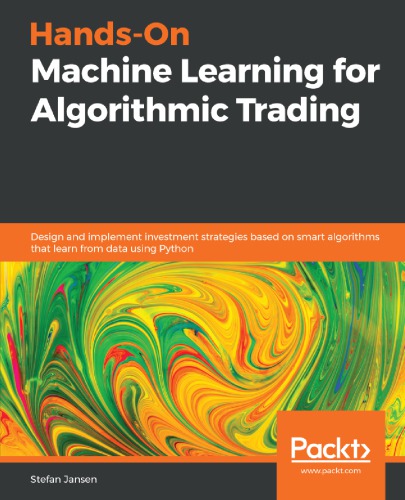موضوعات
آموزش و پرورش
ادبیات و زبان
پزشکی، دندانپزشکی و داروسازی
تاریخ و جغرافیا
داستان و رمان
دیگر
دین و فلسفه
روانشناسی
ریاضیات و آمار
سلامتی، تناسب اندام و رژیم غذایی
شیمی و پلیمر
علوم اجتماعی و حقوق
علوم زیستی و بیوتکنولوژی
فیزیک و نجوم
کامپیوتر و اینترنت
کتابهای کودکان و داستان
کسب و کار و اقتصاد
کشاورزی و دامپزشکی و غذا
معماری
مهندسی و فناوری
هنر و تئاتر
محصولات
Electronic Trading and Blockchain: Yesterday, Today and Tomorrow - Original PDF
نویسندگان: خلاصه: Trading floors in the 60s and 70s involved hundreds of people shouting bids and offers in multi-coloured jackets standing next to each other in different pits, gesticulating with their hands. The decibel levels were extremely high, so high that traders who traded every day had hearing problems later in life. In 1980, the first widely used electronic trading exchange was established. On September 1, 1969, the California Commodity Advisory Research Project (CCARP) was formed and housed at UC Berkeley. The project's first aim was to examine the feasibility of an electronic, for-profit exchange. At the time, there were only 12 exchanges worldwide, and none were for-profit – or electronic. Read first-hand from Richard Sandor, the project director and how CCARP was 20 years too early for the financial world.The Complete Penny Stock Course: Learn How To Generate Profits Consistently By Trading Penny Stocks - Original PDF
نویسندگان: خلاصه: You can learn trading penny stocks from the masses and become part of the 90% of traders who lose money in the stock market, or you can learn from the Best. The Complete Penny Stock Course is based on Timothy Sykes’, various training programs. His strategies have helped individuals like Tim Grittani, Michael Goode and Stephen Dux become millionaires within a couple of years.This course aims to teach you how to become a consistently profitable trader, by taking Tim’s profit-making strategies with penny stocks and presenting them in a well-structured learning format. You’ll start by getting acquainted with the concepts of market and trading psychology. Then you’ll get into the basics of day trading, how to manage your risk and the tools that will help you become profitable. Along the way, you’ll learn strategies and techniques to become consistent in your gains and develop your own trading techniques.What’s inside:- Managing expectations and understanding the market- Understanding the psychology of trading and how it affects you- Learning the basics of day trading- Learning the mechanics of trading penny stocks- Risk management and how to take safe positions- How to trade through advanced techniques- Developing your own profitable trading strategy- Real world examples and case studies No prior trading experience is required.Trade Facilitation in the Multilateral Trading System: Genesis, Course and Accord - Original PDF
نویسندگان: خلاصه: Negotiations on trade facilitation were concluded at the WTO 9th Ministerial Conference in 2013, and the Agreements on Trade Facilitation (TFA), therefore, became the first fully multilateral agreement in WTO history. Since then, trade facilitation has been in the limelight on the stage of the world trading system. During recent years, the TFA has been consistently on the agenda of the summits of G20, G7, and APEC. The Agreement has come into force and shall be implemented on a global scale. As a result, the WTO members shall be prepared to translate the Agreement into their domestic legislation, which will involve a series of reforms in trade laws and policies. There are extensive voices demanding a comprehensive expatiation on trade facilitation and the TFA. It is essential to systematically delve into the genesis of trade facilitation, revisit the course where the TFA came into being, and analyse the well-turned legalese of the TFA. This book meets this demand. This book is path-breaking in these aspects: it expounds on the rationales for trade facilitation and the significance of constituting an international accord on trade facilitation; it restores the one-century track of the international community’s talks on trade facilitation, from the times of the League of Nations to the WTO era; it reveals how the WTO negotiating mechanisms enabled the TFA to be nailed down, which would be enlightening for trade diplomats engaged in other WTO negotiations; and it provides an in-depth commentary on the TFA articles, which will help stakeholders more accurately understand and implement the Agreement. This book will be especially valuable for government officials and policy-makers, trade practitioners, lawyers, advisers, and scholars interested in international economic law, WTO law, international trade, international relations, and international development studies.Global Algorithmic Capital Markets: High Frequency Trading, Dark Pools, and Regulatory Challenges - Original PDF
نویسندگان: خلاصه: Global capital markets have undergone fundamental transformations in recent years and, as a result, have become extraordinarily complex and opaque. Trading space is no longer measured in minutes or seconds but in time units beyond human perception: milliseconds, microseconds, and even nanoseconds. Technological advances have thus scaled up imperceptible and previously irrelevant time differences into operationally manageable and enormously profitable business opportunities for those with the proper high-tech trading tools. These tools include the fastest private communication and trading lines, the most powerful computers and sophisticated algorithms capable of speedily analysing incoming news and trading data and determining optimal trading strategies in microseconds, as well as the possession of gigantic collections of historic and real-time market data. Fragmented capital markets are also becoming a rapidly growing reality in Europe and Asia, and are an established feature of U.S. trading. This raises urgent market governance issues that have largely been overlooked. Global Algorithmic Capital Markets seeks to understand how recent market transformations are affecting core public policy objectives such as investor protection and reduction of systemic risk, as well as fairness, efficiency, and transparency. The operation and health of capital markets affect all of us and have profound implications for equality and justice in society. This unique set of chapters by leading scholars, industry insiders, and regulators discusses ways to strengthen market governance for the benefit of society at whole.How To Make Money in Intraday Trading - Original PDF
نویسندگان: خلاصه: A master class on making money in day trading by one of India’s most famous traders In his trademark blunt style, and laced with wry throwaway humour, Ashwani Gujral cuts through the clutter and awe surrounding day trading, sharply zeroing in on the skills, methods and abilities which spell success in this most challenging and rewarding of endeavours. This book reveals Ashwani’s time-tested and practical day trading strategies & systems which are easy to understand and implement: The 3Ms of trading success — method, money management & mind-set The technical pillars — moving averages, pivots & exceptional candles Profitable trade entry, trade management & exit tactics How to trade the morning range, trends, gaps, & sideways markets How to add the catalyst of big news events to power your trades How to avoid — and profit from — market traps How to harness the explosive power of multiple trading tools working in tandem Money management — position size & risk management How to master your mind in order to vanquish the market The daily discipline of a successful day trader. Packed with 200 real market examples & charts, this book shows you how to approach the market every single trading day like a winner, equipped with appropriate technical expertise and supreme self-confidence. ABOUT THE AUTHOR Ashwani Gujral is one of India’s most famous market analysts & trading experts. He is the Chief Market Strategist and Fund Manager of ashwanigujral.com and a regular market commentator including on CNBC TV18 business channel. He has written on trading & technical analysis for leading US specialist magazines and journals, including The Active Trader, Stock Futures and Options, Futures, Trader’s Source and Technical Analysis of Stocks and Commodities. Ashwani has been a full time trader of stocks and derivatives since 1995. His activities include running a technical analysis plus trading chatroom and newsletter. This is his third book.A Practical Introduction to Day Trading - Original PDF
نویسندگان: خلاصه: Many individuals enter financial markets with the objective of earning a profit from capitalizing on price fluctuations. However, many of these new traders lose their money in attempting to do so. The reason for this is often because these new traders lack any fundamental understanding of financial markets, they cannot interpret any data, and they have no strategy for trading. Trading in markets is really about deploying strategies and managing risks. Indeed, successful traders are those who have strategies which they have proved to be consistent in granting them more financial gains than financial losses.Trading in War: London’s Maritime World in the Age of Cook and Nelson - Original PDF
نویسندگان: خلاصه: In the half-century before the Battle of Trafalgar the port of London became the commercial nexus of a global empire and launch pad of Britain’s military campaigns in North America and Napoleonic Europe. The unruly riverside parishes east of the Tower seethed with life, a crowded, cosmopolitan, and incendiary mix of sailors, soldiers, traders, and the network of ordinary citizens that served them. Harnessing little-known archival and archaeological sources, Lincoln recovers a forgotten maritime world. Her gripping narrative highlights the pervasive impact of war, which brought violence, smuggling, pilfering from ships on the river, and a susceptibility to subversive political ideas. It also commemorates the working maritime community: shipwrights and those who built London’s first docks, wives who coped while husbands were at sea, and early trade unions. This meticulously researched work reveals the lives of ordinary Londoners behind the unstoppable rise of Britain’s sea power and its eventual defeat of Napoleon.Mastering the Trade, Third Edition: Proven Techniques for Profiting from Intraday and Swing Trading Setups - Original PDF
نویسندگان: خلاصه: The go-to guide for launching a lucrative career in trading--fully updated for today's turbulent markets One of today's most successful traders, John F. Carter has made his popular guide more relevant and effective than ever. This new edition ofMastering the Tradeincludes the essential content that has made it a bestselling classic, and includes critical new information for making the best trading decisions in every situation. Combining insightful market overview with trading strategies and concepts, Carter provides: -Proven set-ups, with optimal markets and non-negotiable trading rules -Exact entry, exit, and stop loss levels for swing and intraday trading -Seven key internals, from Skew to VIX -Pre-market checklist for analyzing recent market behavior -Scanning techniques for pinpointing high-probability setups-Effective risk control techniques -Methods for ensuring your computer runs at max speed-Techniques for predicting market corrections From valuable hardware and software to market mechanics, pivot points, and position sizing, Carter delivers a suite of tools for beating out the competition on a regular basis. Mastering the Trade, Third Editionbuilds your expertise in knowing what's working for you and what's working against you, so you make a living on the frontlines of professional trading.Hands-On Machine Learning for Algorithmic Trading - Original PDF
نویسندگان: خلاصه: Historically, algorithmic trading used to be more narrowly defined as the automation of trade execution to minimize costs as offered by the sell side, but we will take a more comprehensive perspective since the use of algorithms, and ML, in particular, has come to impact a broader range of activities from idea generation and alpha factor design to asset allocation, position sizing, and the testing and evaluation of strategies. This chapter looks at the bigger picture of how the use of ML has emerged as a critical source of competitive advantage in the investment industry and where it fits into the investment process to enable algorithmic trading strategies. We will be covering the following topics in the chapter: How this book is organized and who should read it How ML has come to play a strategic role in algorithmic trading How to design and execute a trading strategy How ML adds value to an algorithmic trading strategyNon-market Economies in the Global Trading System: The Special Case of China - Original PDF
نویسندگان: خلاصه: This book provides one of the most comprehensive and compelling analysis of Non-Market Economies (NMEs) and their treatment under the current world trading system. In particular, it examines the treatment of China as an NME in anti-dumping investigations, especially post-December 2016. Central to this analysis is Section 15 of China’s Protocol of Accession to the WTO, which is the focal point of the controversy between China and other major WTO Members. The book highlights multiple perspectives on the interpretation of Section 15 and the Second Ad Note to Article VI of the General Agreement on Tariffs and Trade (GATT), which form the legal basis for China’s special treatment in anti-dumping proceedings, and provides unique approaches on interpreting the above treaty texts. In addition, the book explores recourses to trade remedy instruments other than anti-dumping to identify and address state-driven market distortions in the case of NMEs. Authored by leading practitioners and scholars, the chapters offer a detailed commentary and rich insights into the diverse approaches and methods used by anti-dumping investigation agencies of leading users. This book serves as an all-inclusive resource for discerning all facets of this issue, magnitude of the consequences, and potential threats to the delicate trading system. It is of particular relevance to economies-in-transition and newly acceding countries to the WTO. This book generates special interest among legal practitioners, exporters, trading firms, think tanks, academicians, policy makers and the entire community engaged in international trade disputes with China.آیا کتاب مورد نظر هنوز بر روی سایت قرار نگرفته است؟ جای نگرانی نیست! کافی است بر روی گزینه سفارش کتاب کلیک کرده و درخواست خود را ثبت کنید. در کمتر از چند ساعت کتاب شما را آماده خواهیم کرد.
